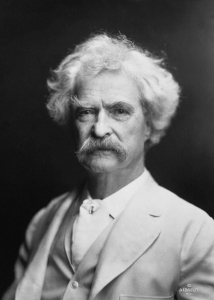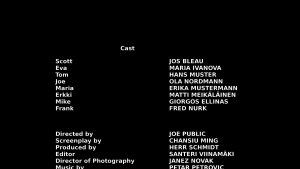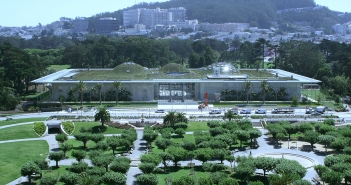For the things we have to learn before we can do them, we learn by doing them.
Aristotle, The Nicomachean Ethics
“That’s how you learn. But after you make the same mistake one, or two, or five times, you’ll eventually get it. And then you’ll make new mistakes.”
Louis Sachar, The Card Turner (2010)
Managing and Nurturing the New Workplace Culture
A recent report from the International Labour Organization provides evidence that employees are more productive when they work outside a conventional office.[i] They are, however, more vulnerable to longer working hours, a more intense pace of work, work-home interference, and elevated stress.

Mark Twain
Other research indicates that common problem for remote workers[ii] include: ‘unplugging after work’ (38%); as well as loneliness (19%); lack of collaboration (17%); distractions at home (10%); managing and coping with time zones (8%); and last but not the least, Staying motivated (8%).
Mark Twain once said: ‘If the first thing you do each morning is to eat a live frog, you can go through the day with the satisfaction of knowing that that is probably the worse things that is going to happen to you all day long. Your ‘frog’ is your biggest, most important task, the one you are most likely to procrastinate on if you don’t do something about it.’
So, I list two recommendations for managing expectations while we survive the #workfromhome phase.
- Focus on a few things, and do them well. The ‘Eisenhower matrix’ is often used to avoid unnecessary time-wasting tasks and know which tasks to do next. Ideally plan to do just one big thing, three medium things, and five small things per day,[iii] the 1-3-5 rule.
- Managing energy is more important than managing time: Keep track of how much you’ll be able to focus at different points of the day. You improve by pushing your practice, not yourself during periods of low energy.
‘Given the lack of face-to-face interaction and heavy reliance on technology, the intent of what someone wants to communicate might be misconstrued.’
Communication (a lack of it or too much of it) generally improves when a collaborative work management platform is used to centralise all communication and collaboration. Suggestions would include using Trello or Asana to Basecamp or Wrike – they are inclusive in keeping managers in the loop and on top of what is happening.[iv]
An MIT Sloan study shows that employees were twice as likely to discuss the quality of communication by top leaders in positive terms during the months of the pandemic than they were a year earlier. In fact, they were 88% more likely to write positively about leaders’ honesty and transparency (46%). Employees also expressed more positive sentiment about transparency (42%) and communication (35%) in general.[v]
One of the most important themes that stand out in the months of the pandemic is the degree and quality of communication by leaders. A recent study shows that employees of Culture 500 companies gave their corporate leaders much higher marks in terms of honest communication and transparency, during the first six months of the pandemic compared to the preceding year.[vi]
On the other side of the coin, when you work from home, you no longer have a clear geographic division between workspace and personal space. It is for this very same reason, once again, difficult to switch off when both personal and professional worlds operate under the same roof. With constant remote work in action, the boundaries between working and not-working start to fade rapidly.
Home-based workers do not tend to receive signals about when to switch off. Therefore, leaders need to communicate clearly on the ‘time for work’ and ‘time for play’ model, which would help smooth everybody’s work model and conduct.

No Place Like Home
Fundamentally, one’s home is a place of relaxation, safety, and security. It’s a place where you subconsciously slip into a calm, easy-going state of mind, putting the stresses of the workday behind. However, working from home punches a hole right through that neat division. Many telecommuters complain they feel like they’re never off the job. They always feel a compulsion to check email or get “just one last thing done.”
So how to set the rules of engagement and boundaries?
Remote work becomes more efficient and satisfying once managers set expectations for the frequency, means, and ideal timing of communication for their teams. For example using videoconferencing for daily check-in meetings, but using IM when something is urgent.
Also, if leaders can allow employees to specify their hours to be contacted and equally importantly, when not to be. Finally, it is important for leaders to keep an eye on communication among team members to ensure that they are sharing information as needed.
Additionally, leaders need to do more frequent check-ins to see how they can support their people in moving forward. Since, above all, leaders need to build trust. During this period managers in certain industries have enjoyed a bit more autonomy within companies to take ownership of projects and complete these how they see fit. A responsible degree of empowerment and delegation is what came out of the process when done with purpose.
Consequently, there’s also been a huge shift in flexibility in this period, with firms having to acknowledge – often for the first time – that their employees have complex lives, which sometimes incorporate children, ageing parents, health concerns, and poor housing, to name but a few of the challenges the pandemic has brought to the fore.

The Art of Learning (by doing)
According to Erin Driver-Linn of Harvard University: ‘Experiential learning is participative—for example, either making or doing … What do we need to understand, as a learner, which is conceptual? And what do we need to understand by experiencing things in a different way?’[vii]
Managing talents and the right selection followed by allocation of relevant resources are attributes that a good institution requires. The core skills any individuals who wants to thrive in an innovative business environment or organisation come down to the following: creativity, problem-solving and continuous improvement skills, developing attitudes and behaviours that are needed to frame and solve problems, and generate new ideas on a continual basis.
Additionally there is risk-assessment and risk-taking skills; the mindset to manage these has to be solidified over time. Upgrading these skills depends heavily on effective planning and implementation.

Managing the ‘New Normal’ Workplace Culture
‘People find meaning in their daily rituals of getting ready to leave home, commuting, grabbing their cup of coffee, and filling their water bottle before sitting at their desk.’[viii]
Broadly, organisational culture is defined by the collective norms of behaviour exhibited by the individuals within an organisation. Since the first, almost global, lockdown of early 2020, there was a shared buzz, online and otherwise, that #wfh would be a recipe for disaster when it comes to maintaining stable company culture.
Among the questions that leaders and managers pondered were:
Will the company culture take a hit because people can’t meet in person, making it harder to solidify their shared beliefs?
Will they be less able to use the company culture as a roadmap for making sensible decisions during tumultuous times?
How can companies continue to build and leverage their culture while all operations are functioning remotely?
At least we seem to be wasting less time now. A working paper from the National Bureau of Economic Research claims that even though we’re attending more meetings in the Zoom era, the average meeting length is shorter and we’re collectively spending less time in them.[ix] Most firms claim to have increased communication, meaning that employees might be feeling more connected.
Besides communication and trust exercise, leaders also need to establish and maintain discipline and boundaries. People working alone tend to become less productive over time, even if they work longer hours than they did in the office. This has less to do with productivity than losing their frame of reference and task orientation. As is often the case, it comes down to mindset. While some of this is innate, other aspects are derived from situational and environmental conditions.
Social media giant Twitter was one of the first companies that decided that their workers could work from home when COVID-19 cases began rising in March 2020.[x] With foresight, Jack Dorsey (CEO of Twitter and Square) also stated that employees will potentially have the option to work remotely indefinitely.
In addition to being ahead of the game, Twitter also provided employees with day-care reimbursements, continued to pay contract workers[xi] whether they’re able to work or not, and banned all in-person events for the rest of 2020. This is the situation to this day.

American graphic artist Harvey Ball.
Put a Human Face on your Organisation
Especially in the context of an abrupt shift to remote work, it is important for leaders to acknowledge stress, listen to employees’ anxieties and concerns, and empathize with their struggles. If a newly remote employee is clearly struggling, but failing to communicate stress or anxiety, ask them how they’re doing.
Even a general question such as: “How is this remote work situation working out for you so far?” can elicit important information that you might not otherwise hear.
Once you ask the question, be sure to listen carefully to the response, and briefly restate it back to the employee to ensure that you understood their answer correctly. Let the employee’s stress or concerns (rather than your own) be the focus of this conversation.

Cut to Credits!
Successful organizations need effective leaders. With the aging of the workforce and imminent retirement of the Baby Boomers, U.S. organizations are experiencing a shortage of skilled leaders and a significant need for leadership training. Skilled leadership affects the entire workforce; numerous studies indicate that one of the key reasons for employees leaving their jobs is because they are uncomfortable with the working environment created by a direct supervisor. Successful organizations need effective, parental, and democratic leaders at this juncture.
Leadership training could reduce turnover at all levels in an organization, the focus remains on learning and managing adaptability, interpersonal people skills, self-awareness, developing and maintaining a sense of purpose, timely and effective decisiveness, as well as collaborative skills. The basic aim of training and development programmes is to help the organization to achieve its mission and goals by improving individual and, ultimately, organizational performance.
In light of the initiatives of prominent global businesses as well as small businesses at a domestic and local level, the concept of a virtual workplace has been redefined in the past twelve months. This is a useful time to document the process as at a later stage we will need to look back and take lessons from this period.
Virtual bonding is helping many to come emotionally closer to their colleagues. Some have seen a marked reduction in the communication gap between themselves and their senior. This insight may not seem like rocket science, but a key lesson for companies is to work out ways of avoiding toxicity and recognise the supreme importance of fairness and kindness.
Research into emotional intelligence and emotional contagion tells us that employees look to their leaders for cues about how to react to sudden changes or crisis situations. If a manager communicates stress and helplessness, this will have what Daniel Goleman calls a ‘trickle-down’ effect on employees.
Effective leaders[xii] generally take a two-pronged approach, both acknowledging the stress and anxiety that employees may be feeling in difficult circumstances, but also providing affirmation of confidence in their teams. We are all in this together, and we will get through it – perhaps we should see it as a time to get to know ourselves a bit better.
[i] ‘Working anytime, anywhere: The effects on the world of work’, Eurofound, http://www.ilo.org/wcmsp5/groups/public/—dgreports/—dcomm/—publ/documents/publication/wcms_544138.pdf
[ii] Business Coach: Vanessa Moore, May 30th, 2019 https://www.linkedin.com/pulse/eat-frog-vanessa-moore-1c/
[iii] Deen Dayal Yadav, ‘How to cope up with the challenges of remote working?’ Thrive Global, May 6th, 2020, https://thriveglobal.com/stories/how-to-cope-up-with-the-challenges-of-remote-working/
[iv] Trello vs Asana vs Basecamp, Grasshopper Resources, https://grasshopper.com/resources/tools/project-management-tools-trello-asana-basecamp/
[v] ‘STUDY: Organizations Rising to the Challenge of COVID-19 Communications, but Needs Persist; Leaders Must Address Concerns and Demonstrate Transparency, Clarity and Openness’ BusinessWire, April 3rd, 2020. https://www.businesswire.com/news/home/20200403005278/en/STUDY-Organizations-Rising-to-the-Challenge-of-COVID-19-Communications-but-Needs-Persist-Leaders-Must-Address-Concerns-and-Demonstrate-Transparency-Clarity-and-Openness
[vi] Donald Sull and Charles Sull, ‘How Companies Are Winning on Culture During COVID-19’ October 28th, 2020, https://sloanreview.mit.edu/article/how-companies-are-winning-on-culture-during-covid-19/
[vii] ‘Innovation & discovery skills for ‘innovention’ managers’ The Sentinel, February 14th, 2021, https://www.sentinelassam.com/editorial/innovation-discovery-skills-for-innovention-managers-524593
[viii] James Thomas, ‘How the pandemic can change workplace culture for the better’ Strategy&, https://www.strategyand.pwc.com/m1/en/articles/2020/how-the-pandemic-can-change-workplace-culture-for-the-better.html
[ix] Daniel Kost, ‘You’re Right! You Are Working Longer and Attending More Meetings,’ Harvard Business School, September 14th, 2020, https://hbswk.hbs.edu/item/you-re-right-you-are-working-longer-and-attending-more-meetings
[x] Untitled, ‘Coronavirus: Twitter tells staff to work from home,’ BBC, March 3rd, 2020, https://www.bbc.com/news/business-51700937
[xi] Jack Kelly, ‘Twitter CEO Jack Dorsey Tells Employees They Can Work From Home ‘Forever’—Before You Celebrate, There’s A Catch’, May 13th, 2020, https://www.forbes.com/sites/jackkelly/2020/05/13/twitter-ceo-jack-dorsey-tells-employees-they-can-work-from-home-forever-before-you-celebrate-theres-a-catch/?sh=32caf77a2e91
[xii] ‘Daniel Goleman, ‘An EI-Based Theory of Performance’ Consortium for Research on Emotional Intelligence in Organisations, 2000, http://www.eiconsortium.org/reprints/ei_theory_performance.html




